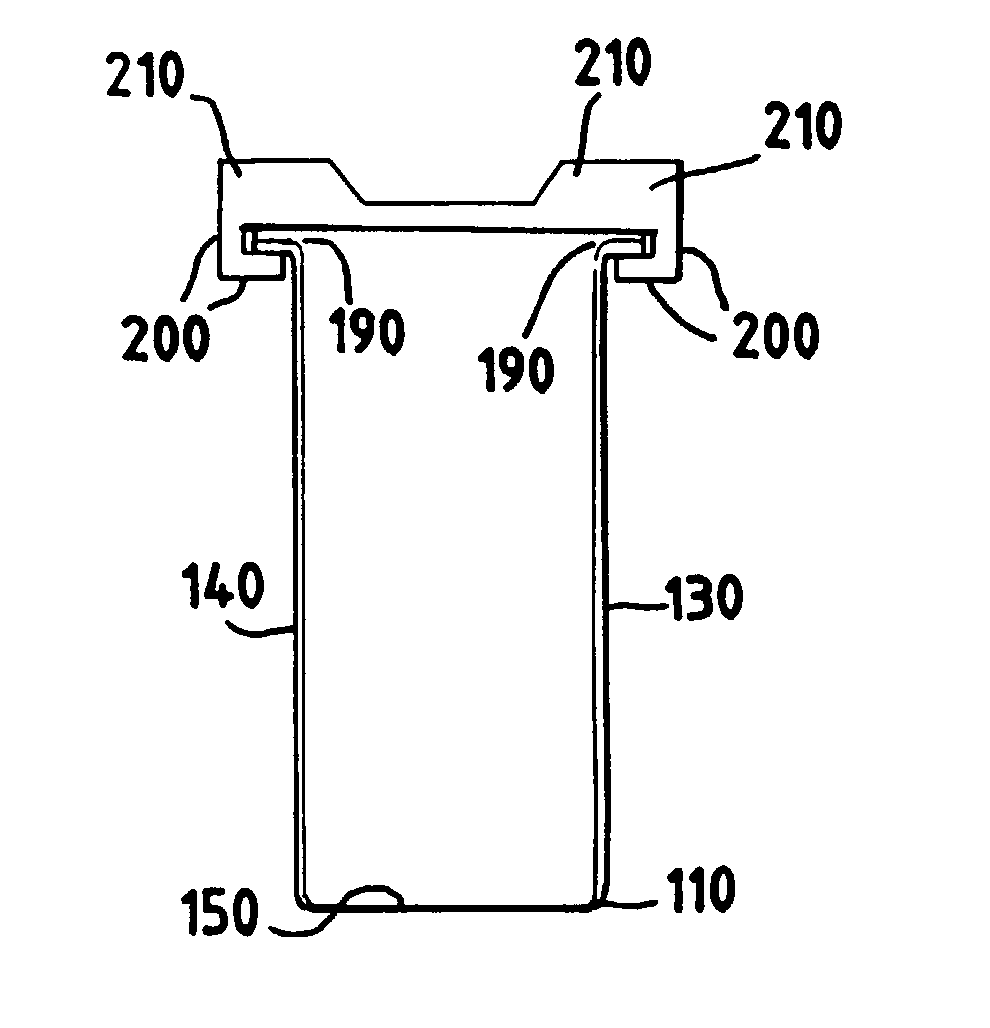Sterilization containers and methods for radiation sterilization of liquid products
a technology for sterilizing containers and liquid products, applied in the directions of packaging sterilization, disinfection, lavatory sanitation, etc., can solve the problems of introducing the potential for contamination of the final product and inability to achieve large product volumes
- Summary
- Abstract
- Description
- Claims
- Application Information
AI Technical Summary
Benefits of technology
Problems solved by technology
Method used
Image
Examples
Embodiment Construction
[0068] This example describes experiments that confirm the utility of a preferred sterilization container according to the invention in the present inventive preferred method of sterilization by radiation.
[0069] For these studies, about 100 liters of serum were placed in a sterilization container having an inner bag, as depicted in FIG. 2. Three batches were sterilized using the sterilization process, with two of the batches containing 15 sterilization containers, and one of the batches containing 14 sterilization containers. The filled sterilization containers were transferred to Steris / Isomedix (Libertyville, Ill.) where batch process irradiation sterilization was carried out. Subsequent tests confirmed the performance of the serum as compared to serum that had been sterilized as per prior art procedures.
[0070] These results thus confirm that the present method of radiation sterilization and sterilization container for use in same can be employed to obtain sterile liquid products....
PUM
| Property | Measurement | Unit |
|---|---|---|
| Length | aaaaa | aaaaa |
| Length | aaaaa | aaaaa |
| Length | aaaaa | aaaaa |
Abstract
Description
Claims
Application Information
 Login to View More
Login to View More - R&D
- Intellectual Property
- Life Sciences
- Materials
- Tech Scout
- Unparalleled Data Quality
- Higher Quality Content
- 60% Fewer Hallucinations
Browse by: Latest US Patents, China's latest patents, Technical Efficacy Thesaurus, Application Domain, Technology Topic, Popular Technical Reports.
© 2025 PatSnap. All rights reserved.Legal|Privacy policy|Modern Slavery Act Transparency Statement|Sitemap|About US| Contact US: help@patsnap.com



